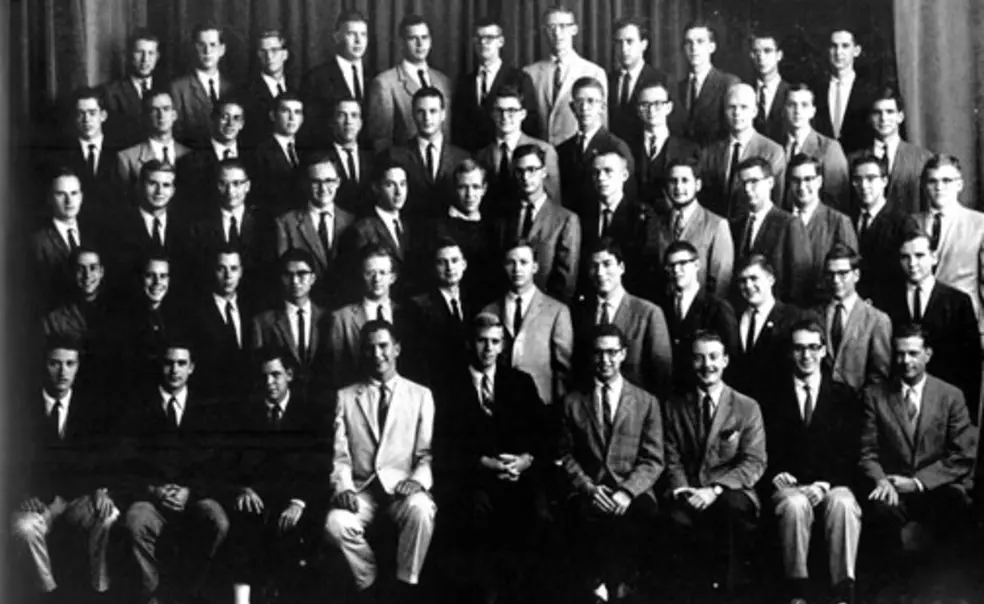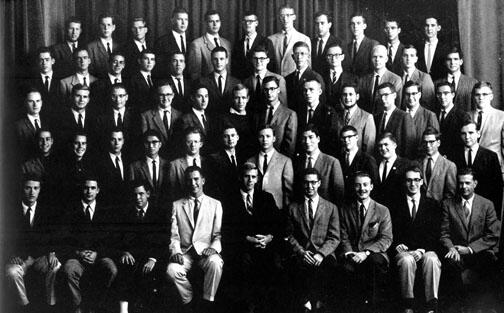From alternative to mainstream: Wilson College at 50
“Walden — indoors,” answered Robert Tellander ’60.
A year later, Wilson Lodge moved to the lower part of campus, and in 1967 it became Wilson College. About 130 alumni, faculty, administrators, and undergraduates paid tribute to Wilson College Nov. 20, celebrating the 50th anniversary of the opening of the New Quad dorms that, along with Wilcox Hall, provided a social alternative that became a model for the residential college system that is very much in Princeton’s mainstream today.
Wilson College provided a haven for many who did not fit, or who had no desire to fit, into a social system domi nated by the eating clubs. They included Tellander and other self-described “weenie grinds,” teetotalers, foreign students, evangelical Christians, intellectuals, and other “rugged individualists,” in the words of Joel Davidow ’60. It even extended to those, such as Robert Good ’71, who said that they joined to escape the long thrice-daily walk from the New New Quad to the freshman dining halls.
Wilson College showed that “there was an alternative life” to the eating clubs — “the life of the mind,” said Martin Seligman ’64. By providing a place where students comfortably could debate politics and ideas, by hosting events such as readings by beatnik poets or performances by jazz great Miles Davis, and by including faculty fellows (another innovation), Seligman — a professsor at the University of Pennsylvania — said that the college provided “the most intellectually vigorous environment I’ve ever been in.” Before coeducation, Wilson College also housed women from other universities who were studying on campus as part of the Critical Language program.
One distinctive feature of Wilson College, several speakers suggested, was that it was initiated by students. In the fall of 1956, a dozen sophomores approached Goheen to request a place in addition to the eating clubs where they could eat and congregate. The president allowed them to take their meals in Madison Hall, and by 1959, following the infamous “Dirty Bicker” of 1958, almost 80 sophomores, nearly 10 percent of the class, chose to join what became known as the Woodrow Wilson Lodge.
In 1960, Woodrow Wilson Lodge changed its name to the Woodrow Wilson Society with the opening of the five New Quad dormitories: Gauss, Dodge-Osborn, 1937, 1938, and 1939 (Wilcox Hall followed in 1961). Membership swelled to more than 300 that first year, leading several eating clubs to close due to low enrollment. Wilson College, as it was rechristened in 1967, became the University’s first residential college, with membership open to all undergraduates.
During a panel discussion, several alumni described the college’s formative years. Tellander recalled his decision to quit Quad rangle Club after seeing the club’s “Slam Book,” a binder in which members could blackball prospective members. “I can’t do this,” Tellander recalled thinking as that year’s bicker approached. “I won’t do this. Why are we doing this?”
Darwin Labarthe ’61, one of the founders of Wilson Lodge, described being inspired by Goheen’s 1957 Baccalaureate address, in which he urged “an awareness of things as they are and recognition of things as they could be.”
Panelists also shared stories about the lighter side of Wilson College life, such as the time members stole the cannon in front of Cannon Club (Cannon members broke several of Wilcox Hall’s plate-glass windows in retaliation) and the year Wilson College defeated Tiger Inn in intramural basketball.
In a keynote address, professor emeritus John V. Fleming *63, who served as Wilson College master from 1969 to 1972 and 1989 to 1997, paid tribute to Goheen and to Professor Julian Jaynes, the college’s first master.
Editor's note See more alumni reminiscences of Wilson College in the letters section of this issue.













No responses yet